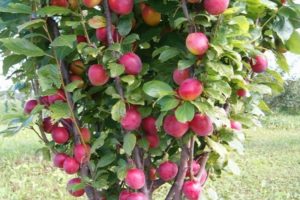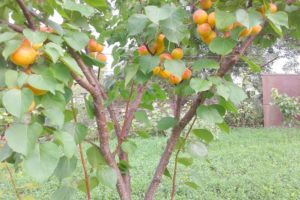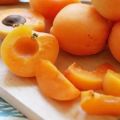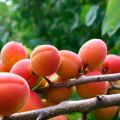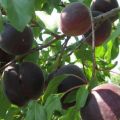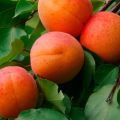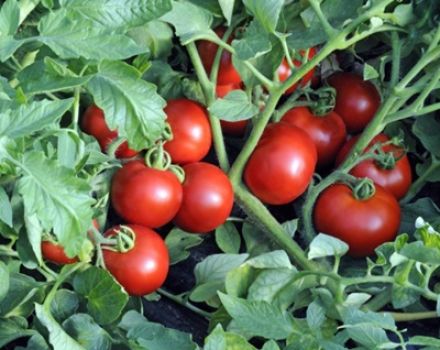Description of the Apricot variety Aquarius, fruiting characteristics and disease resistance
Apricots Aquarius is a winter-hardy variety, not distinguished by outstanding fruit shapes, but striking with a balanced taste. Yields are stable in order to provide a family with tasty, healthy fruits, one adult tree is enough.
Breeding history
The variety was bred in the Main Botanical Garden of Russia (in Moscow) by free pollination of the Lel seedling. Like most varieties bred under the leadership of the responsible breeder L.A. Kramarenko, Apricot Aquarius is rapidly gaining popularity. Work on its improvement lasted for 8 years, from 1996 to 2004.
Description of the variety
The powerful skeleton of a 6-meter tree is able to withstand not only a 30-kilogram harvest, but also strong gusts of wind, frost and other manifestations of the climate that are not typical for traditional areas of apricot growing.
Features of the Aquarius apricot tree:
- the bark is brown with a reddish tint;
- medium crown density is formed from straight shoots;
- large round leaves with a pointed tip of a dark green color, without visible veins;
- Aquarius flowers are small, white;
- branching of young plants is rare;
- in mature trees, the bark is cut with deep grooves both on the trunk and on the branches.
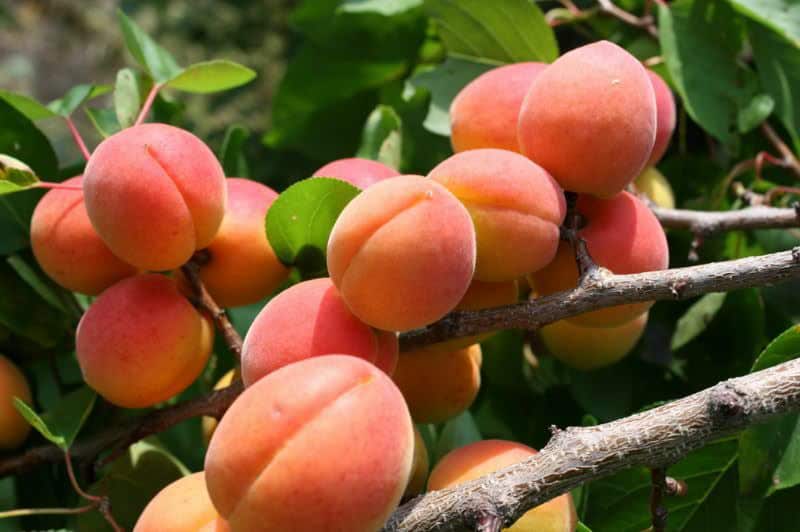
The variety of apricots bred for cultivation in central Russia does not differ in special decorative qualities. During lush flowering, the tree looks weightless, airy.
A description of the apricot variety would not be complete without the characteristics of the fruit:
- medium-density orange pulp;
- the skin is yellow with a dull blush;
- round fruit;
- the symmetry of the fruit emphasizes the pronounced longitudinal scar;
- weight 27-32 g;
- a medium-sized bone is easily separated from the pulp;
- the taste is sweet and sour;
- tasting score 4.5 points.
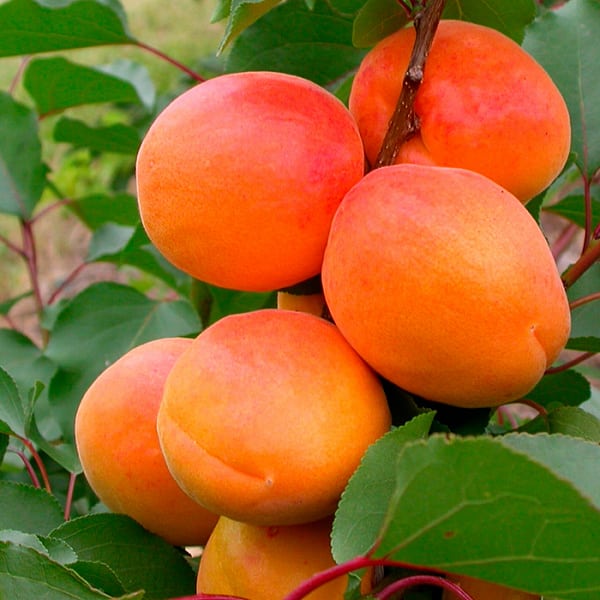
A young apricot tree brings 10-15 kg per season, the yield of an adult plant is twice as large. Apricot Aquarius is not a long-liver. The fruit tree will delight with rich harvests for 18-20 years.
Advantages and disadvantages
The best qualities of the variety are:
- In the resistance of the winter-hardy apricot tree to viral and fungal diseases, including clasterosporiosis.
- Enduring harsh winters without catastrophic consequences requiring lengthy recovery measures.
- Rare cases of watering in conditions of prolonged drought.
- Consistently high yields.
- Self-sufficiency, no pollinator is required for the formation of ovaries.
- High taste characteristics of fruits.
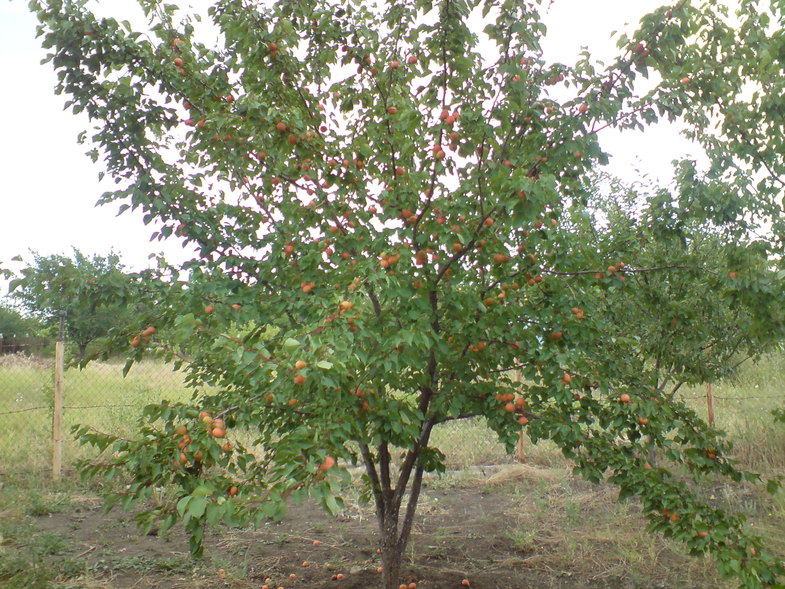
There are much fewer disadvantages - poor transportability and inconvenience of harvesting from the crown of an adult tree.
Specifications
The average fruiting apricot variety Aquarius practically does not give gardeners any problems, which follows from the characteristics and reviews of amateur gardeners from different regions.
Drought resistance, winter hardiness
Young trees do not have sufficiently long roots capable of extracting water from soil layers remote from the surface; during a drought period, they must be watered abundantly. The older the plant, the less watering it needs.

Judging by the reviews of gardeners from the northern regions, Aquarius's frost resistance is better than that of many winter-hardy varieties. But in frosts down to -40 ° C, this apricot can also get damaged. Recovering from frostbite is relatively easy.
Pollination, flowering and ripening times
The flowering of Aquarius is quite exuberant. It begins during the establishment of positive daily temperatures on the street. The tree, like a shawl, is wrapped in white small flowers, exuding a light honey scent for several meters around. It also attracts insects that contribute to high-quality pollination.Fruit ripening occurs in medium terms, starting from about mid-August.
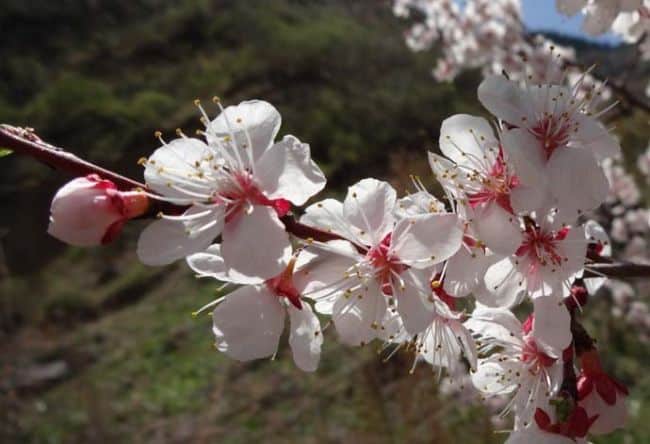
Productivity and fruiting
For a temperate climate, the fruits of the Apricot Aquarius are quite large. The stability of fruiting lies not only in the fact that flowers and fruits appear on the apricot annually, but also in the predictability of the weight of the crop.
From a young tree that begins bearing fruit from the third year after planting in a permanent place, 10 to 15 kg are harvested. The tree bears more and more fruits every year. By the age of 8, its yield reaches a maximum - 25-30 kg.
Disease and pest resistance
Drupes are most susceptible to viral diseases. Aquarius, like most winter-hardy varieties bred in temperate climates, is resistant to these diseases. It is impossible to completely exclude the disease of Aquarius with moniliosis, scab, clotterosporiosis. High-quality prevention and remoteness from other fruit trees is the best protection against viruses, fungi, and pests. Despite the alluring honey aroma, the aphid does not like Aquarius apricot.
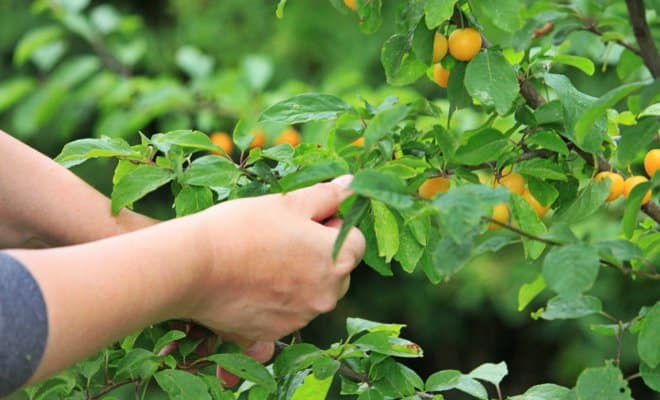
Features of planting and care
Planting must be carried out in the spring so that the seedling can grow stronger over the summer. This will help him to spend the winter without any special consequences. Root dressing twice a year. The first time the fertilizer "Kemira" is applied to the soil enriched with ash, humus, peat, in the fall, on the eve of planting. Spring feeding consists of nitrogen fertilizers and superphosphate. At the stage of fruit ripening, the Apricot Aquarius requires phosphorus.
On depleted soils, watering with a solution of humus diluted with water 1 to 10 is a must. Even winter-hardy varieties of apricots do not like cold watering, so the water and the composition for irrigation should be warmed up in the sun.
After harvesting in early September, you can start pre-winter preparation, it consists in whitewashing the lower part of the trunk. Copper sulfate can be added to whitewash, this will give additional protection against fungal infections. Whitewashing is also done during the spring months, which protects the plant from woodworms and other pests.
